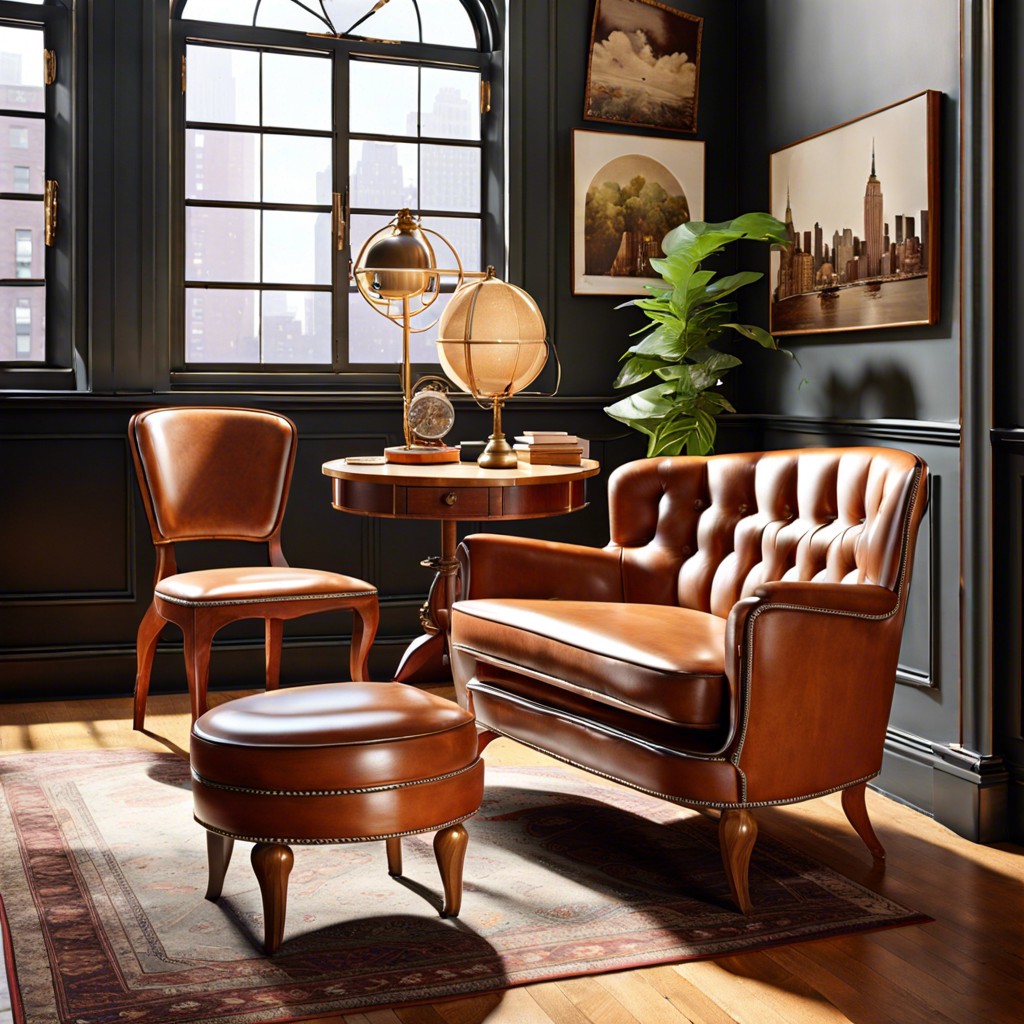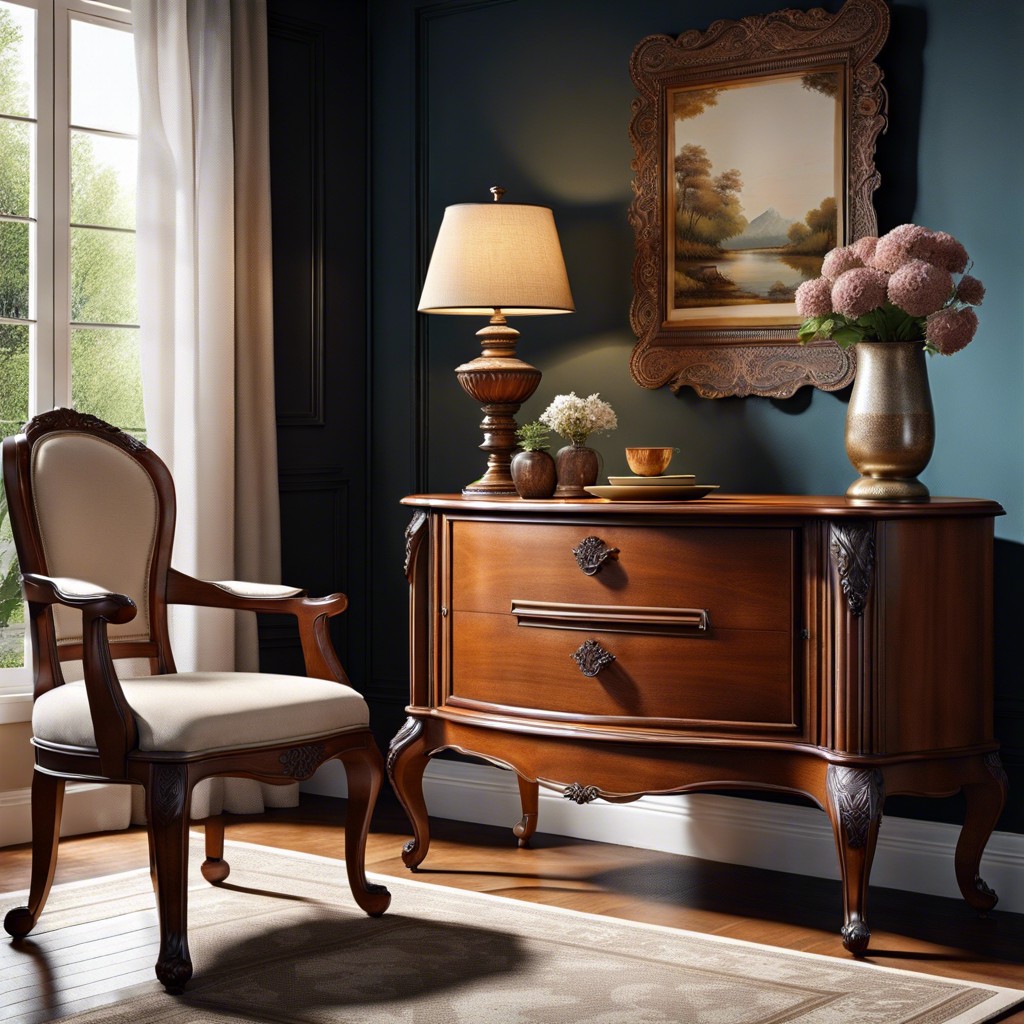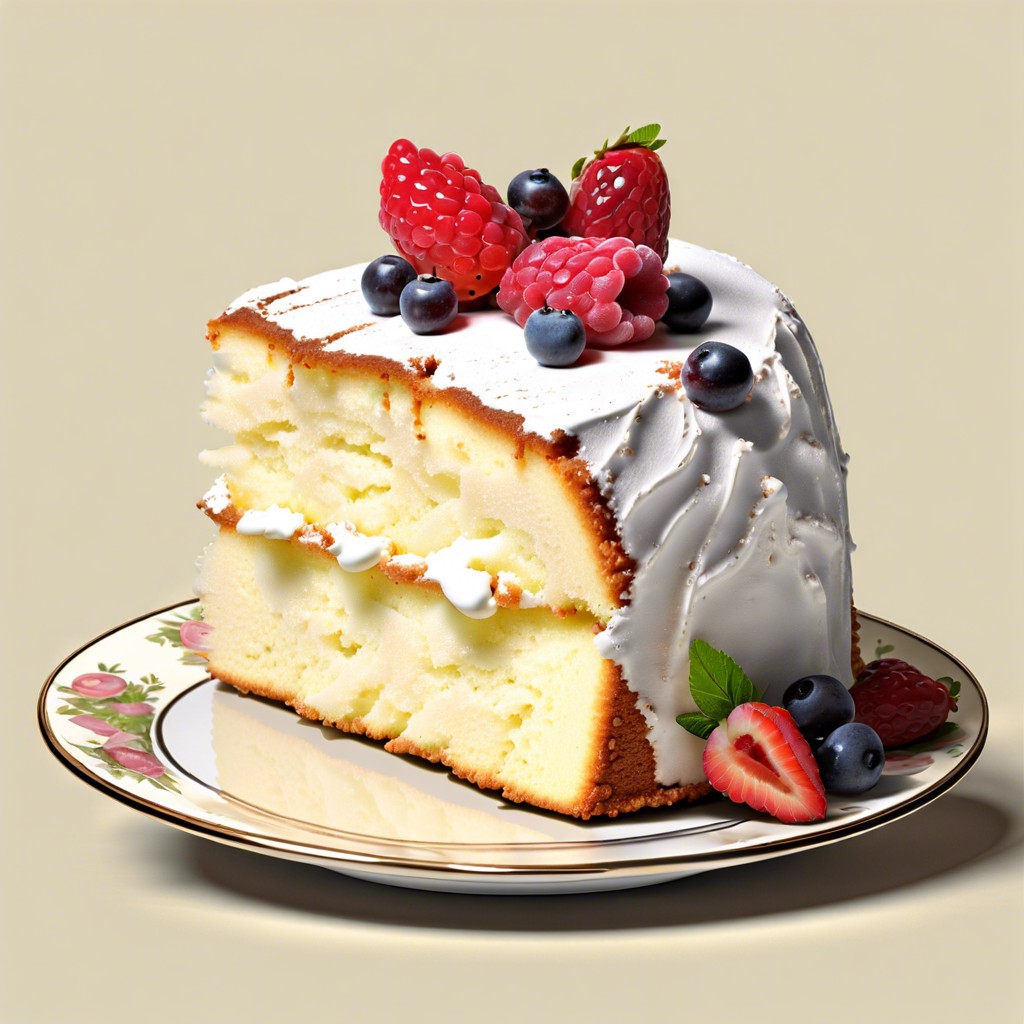Last updated on
New York City boasts a diverse landscape of vintage furniture stores offering unique pieces from different eras and styles.
Key takeaways:
- Vintage furniture shops in NYC offer diverse pieces from different eras.
- Look for manufacturer’s marks, construction methods, and materials to identify authenticity.
- Vintage furniture is ideal for small living spaces in NYC apartments.
- The value of vintage furniture lies in craftsmanship, history, and rarity.
- Proper care includes regular cleaning, avoiding harsh chemicals, and maintaining environmental conditions.
Exploring Vintage Furniture Shops in NYC

New York City boasts a rich landscape of vintage furniture shops, each offering a slice of history through their curated collections. In neighborhoods like Williamsburg, the Lower East Side, and Midtown, these stores provide a diverse array of pieces, from mid-century modern to Victorian elegance. When exploring, consider proximity to specialized restoration services, as they often collaborate with shops, ensuring pieces are well-maintained. Workshops or events may also be held, enriching the shopping experience with historical context and care tips. Prior research on dealer reputation and inventory can facilitate a targeted shopping trip, maximizing the chance of finding a piece that not only reflects personal style but also holds potential for appreciation in value.
Identifying Authentic Vintage Furniture

Determining the age of a piece is crucial; furniture over 30 years old is generally considered vintage. Look for manufacturer’s marks, labels, or stamps which can often be found on the bottom, back, or inside drawers. These identifiers can help trace the item’s origin and age.
Construction methods also reveal authenticity. Prior to the mid-20th century, dovetail joints were hand-cut and varied in size, indicating a pre-industrial creation. By contrast, uniform dovetails typically signify post-1950s manufacturing.
Materials used are telling, too. Authentic vintage pieces are more likely to have solid wood construction, whereas contemporary replicas often use particleboard or other composites. Check for wear and patina; genuine vintage items will show signs of use in a way that is hard to replicate artificially.
Upkeep histories may also be present. Old repair or refurbishment methods can be apparent, showcasing vintage legitimacy. For instance, older glue, non-uniform nail types, or aged varnish alongside the construction hint at a piece’s journey through time.
Provenance, or the item’s history, can also validate its authenticity. Documentation or verifiable stories associated with the furniture can add to its vintage credibility.
Lastly, trust your instincts. If an item seems too pristine without a clear restoration history, delve deeper. Authentic vintage pieces carry a sense of history that can often be felt as much as it can be inspected.
Finding Small-Space-Friendly Vintage Furniture

New York City apartments often demand ingenuity when incorporating furniture due to space constraints. Vintage pieces, celebrated for their unique designs and size variability, can accommodate such limits. Opting for multifunctional items like drop-leaf tables or nesting chairs maximizes space without compromising style. Mirrored or glass-topped vintage pieces create an illusion of openness, making areas appear larger. Antique stores and flea markets in NYC frequently carry such items ideal for small living spaces.
When scouring shops, prioritize items with slim profiles and elevated legs. This creates a sense of airiness, reducing visual clutter. Shelves and wall-mounted units from the mid-century can add character while serving as practical storage. With careful selection, vintage furniture can enhance the functionality of tight quarters, proving that size need not deter style and practicality.
Understanding the Value of Vintage Furniture

The intrinsic value of vintage furniture is rooted in its craftsmanship, history, and rarity. Each piece tells a story of its era, offering a glimpse into the past through its design, materials, and construction techniques.
Resale value hinges on condition, brand, and demand. Well-preserved pieces by notable designers or manufacturers typically fetch higher prices. Authenticity enhances value, so seek out original labels, maker’s marks, or provenance when possible.
Appreciation potential is another factor. Trends in interior design can elevate the worth of certain styles. Pieces that epitomize an era or are representative of a movement, like mid-century modern, often become more valuable over time.
Maintenance costs can affect the overall value. Factor in the expense of proper care, which may include refinishing, reupholstering, or professional repairs for wear and tear.
Lastly, sustainability is a growing concern that adds value. Vintage furniture is an eco-friendly choice, as it reduces the need for new resources and minimizes waste. It also promotes a more unique, personal style in home decor.
Caring for Vintage Furniture Purchases

Proper care extends the life and beauty of vintage furniture, ensuring it remains a highlight in any living space.
For wood pieces, regular dusting with a soft cloth prevents the buildup of grime. When deeper cleaning is necessary, use gentle, wood-friendly cleaners and avoid harsh chemicals that can strip finishes. Apply quality furniture wax annually to maintain luster and protect the surface.
Upholstered items necessitate careful attention to avoid damage. Vacuuming with an upholstery attachment can remove dust and debris. For stains, consult a professional cleaner familiar with vintage fabrics to avoid unintentional damage.
Environmental conditions significantly affect vintage furniture. Keep items out of direct sunlight to prevent fading and drying out. Maintain a stable humidity level to avoid wood warp and cracking. Extreme temperatures and dryness can cause joints to loosen and veneers to peel, so temperature-controlled environments are preferable.
Lastly, when moving or adjusting vintage furniture, lift rather than drag to prevent structural stress. Mind the delicate parts, as hardware and decorative elements can be fragile and hard to replace. Regular inspections can catch early signs of wear or damage, allowing for timely repairs that preserve the furniture’s integrity.




